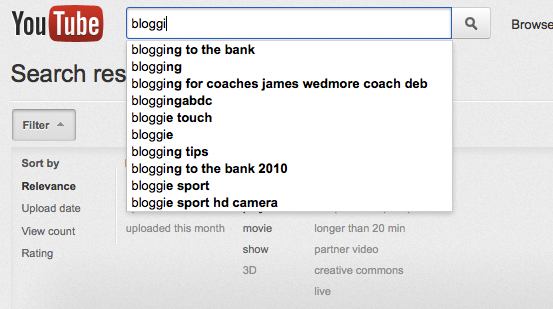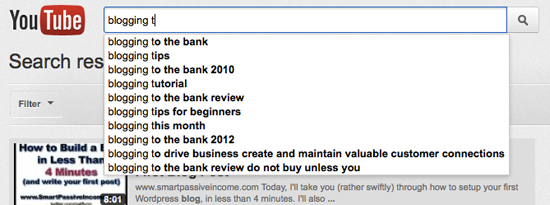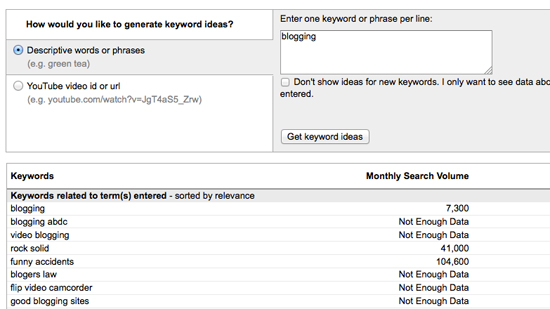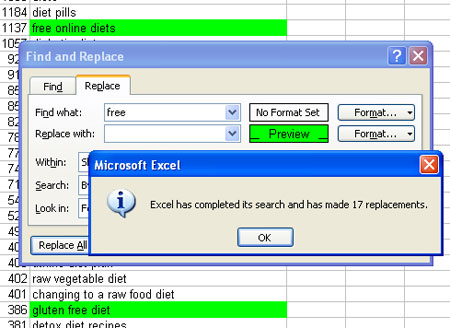YouTube does consider user engagement as well (like number of views, views in common and user “retention”) but tagging is the *first* step to ranking your video in YouTube search results (and thus getting a good chance to get ranked in Universal Results as well).
A most scientific (but still useful to start brainstorming) approach to classifying YouTube tags (pdf) groups all the tags as follows:
- Generic relationship between tag and video content:
- Tag identifies what the video is of at its most primary and objective level – no subject specific knowledge is needed to make this distinction (e.g. a video of a cat, tagged as ‘cat’ or ‘animal’)
- General YouTube defined Category or Genre (e.g. Comedy, Entertainment, Music)
- Specific relationship between tag and video content:
- Tag identifies what video is of. Familiarity or some existing knowledge is needed to make this connection (this may be about names, locations, venues, etc).
- Tag only useful to a minority of users, specific individual or group
- Refining tag (Tag which cannot stand alone – only useful when looked at as part of the larger tag set (e.g., episodes of a series of videos specified by a number)
- Self-reference tagging (e.g. “my dog”),
- Irrelevant/Non Useful Tags (those may vary from attention-grabbing and misspelled tags to conjunctions and prepositions).
Obviously, the top three classes of tags should all be considered for ranking for various types of search queries (navigational search queries, generic search, category search, etc).
Brainstorming the Tags
Most YouTube pros suggest including as many relevant tags as you can (of course, that doesn’t mean you need hundreds of them but dropping the dozen of most essential ones is very important for your rankings). YouTube doesn’t restrict the number of tags as well which is good sign.
I do agree that we need to use quite a few tags, but the focus is on “smart” or “educated” tagging:
1) Include Your Brand-Specific Tags
This one comes first because it’s so often neglected!
- You *want* to rank for your own brand name in YouTube search results;
- You do want your own videos to appear in Google’s universal results!
So what you never want to forget is to “self-reference” your video:
- With your own name (the one the world knows you by);
- Your brand name: preferably in a couple of variations, like: [brand name], [brandname] and [brandname.com]
2) Use YouTube Auto-Suggest
What you do next is playing with YouTube search results a bit. Two things we want to do here:
- See what YouTube suggests typing in when searching (you want to rank for all of those words);
- Identifying a few videos that tend to pop up now and then for important search queries (especially in default “by Relevance” tab)
So what you are going to do next is trying a few random keyword-based searches in a row taking a note of the two things I’ve mentioned above:
Gotta love Auto-Suggest: each new letter you add brings up more and more suggestions:
3) Use YouTube Tool
The aforementioned YouTube keyword suggestion tool can be used to both extract keywords from your competitors’ videos and to generate suggestions based on your core term (just like Google’s Adsense external tool), so you may want to play further for even more bright ideas:
Adding the Tags
Now that you have thoroughly collected all the relevant tags, throw them into an Excel spreadsheet and use all sorts of sorting and conditional formatting to identify your best “core” words you want to include into your tags.
For example, you can use “Find and Replace” feature to highlight all the cells that have “free” in yellow (read more about organizing your keyword modifiers <- “oldie but goodie”):
Again, while you are free to play with the above tools to generate lots of keyword ideas, the main point of this step is to identify your most important core terms to build upon. After all, you don’t want hundreds of tags added. Instead, you want to add the best ones.
For this:
- Omit “stop” words (especially articles “a” / “the”);
- Go with plural variant of the similar phrases (this is usually your best bet);
- Mind what YouTube suggests you using (it probably knows its stuff).
Further Steps
Before tagging your videos, be sure to read this old but great guide on optimizing your YouTube tags.
Also, the quick research you are invited to run in this article for each of the videos you upload will give you lots of data to find a great title for your video as well. Remember, while tags are important, the video title is what attracts clicks in many cases (and, per my experience, it influences rankings as well).
****So be sure to match your tags with title using the tag research tools listed above.
Any more tips on YouTube video rankings? Please share them in the comments!
Oh and don’t forget to subscribe to our YouTube channel to get notified of new SEO videos we upload!

















